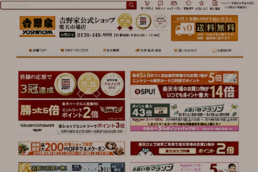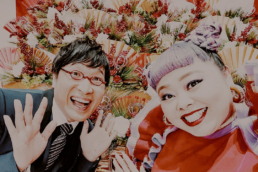Business Focus: Content Strategy, everything you need to know before you start
We continue our column on Business Focus talking about Content Strategy. Last time we talked about Native Advertising which is closely related to content marketing. So today, let's go and see what to do before jumping into the fray!
Content Strategy, how to lay the foundation for a solid campaign
Author: Erika
Probably some of you have already heard of Content Marketing, after all it is one of those types of promotion that is going for the most along with Native Advertising. However, a campaign cannot work separately from a more comprehensive and long-lasting strategy.
"Having a precise and structured content strategy is key to creating winning digital campaigns."
This is not only one of our mantras, but it should be that of every company that decides to approach (even for the first time) digital marketing. In fact, there is no content marketing without content strategy, or at least not one that works profitably.
So it's extremely important to study and understand how we can leverage a winning strategy for our business, whatever it may be.
What are Content Marketing and Content Strategy

First of all, let's understand what it actually is.
Content marketing is the creation and distribution of useful and valuable content. All this aimed at a well-defined target audience in order to attract and acquire potential customers and make them take profitable actions.
The content strategy instead deals with the more "theoretical and strategic" aspects. In the strategy we must in fact include all sides related to the planning and management of content throughout its life cycle. This includes not only the creation and publication of the content, but also a careful analysis. In fact, we're talking about a study that involves aligning content with a company's goals, content development, production, measurement and even archiving. This entire phase precedes the implementation of the content itself.
Content strategy is what lies upstream, everything that defines and regulates the practical development process. In fact, the figure of the content strategist does not deal with the production of content, but focuses the attention to the planning of the same. This is the person responsible for deciding not only when content should be published but above all why it should be produced. In fact, each content is a single brick that goes to lay the foundation for the success of the whole communication strategy. It is therefore important to have a well-defined project, studied and that can be analyzed in every step.
Content Strategy: What you need to know before you start
We've said that content strategy is ultimately nothing more than a strategy that envisions a company's business goals and then uses content as the primary means to achieve those goals.
Content can be of various types but one of the important focuses that these have in common is the intelligent use of stories and creative writing, in any form, but we’ll talk more on that in another article.
Content marketing, even in Japan, focuses on a variety of content that can range from a blog post to a confirmation page. The task of these productions is to build a connection of trust between a company's products or services and its target audience. This becomes more fundamental in Japan, where gaining the trust of the customer means everything and has much more weight than in other countries. In fact, as we've mentioned in the past, the Japanese people are basically a traditionalist nation that doesn't like change. In fact, once the target audience trusts and relies on a specific company, they never leave it again.
But this is just the beginning of the Content Strategy concept, so let's take a more specific look at what is involved in a good strategy.
Content strategy: The Vision

When we decide to approach something, if we want this thing to be successful, the fundamental basis is to have a clear vision of what this is all about.
Defining the goals, objectives, what we hope to accomplish and how we hope to accomplish it are the first steps toward writing a good business plan. This starts with a vision of what we want the company to be in three to five years, and then creating an action plan to achieve that vision. This is the foundation of a good strategy.
In addition to making a list of all these things, it is equally important to measure with milestones and goals that are solid enough to challenge ourselves but at the same time flexible and adaptable to any situation. And in this regard, this pandemic has certainly taught us very quickly that everything is mutable and everything can change in a matter of very few days. Hence precisely the importance of having stable and precise goals, but at the same time flexible and adaptable to any occasion. This will allow you to have things well clear and under control, and to start your journey from a stronger position.
This is all part of content strategy. Dealing with the vision, the pros and cons of how and why a piece of content will be created, managed, archived or updated.
At the end of the day, content strategy boils down to writing and planning content with specific goals and objectives in mind. Nothing we're going to share should be disconnected from everything else in the content and business goals. That's really where vision and purpose come into play.
Planning for success

Whatever project you're working on, whether it's personal or for a client, if you want to grow your content it becomes a matter of visibility. Inevitably we will find ourselves fighting for the top spot on google or finding our audience on social. To do this though, it means we need a strategy or otherwise a plan of action.
By now we know what we want to achieve with the content that we are going to create. The correct question to ask ourselves now is "how can we achieve it? In what way?" So let's talk about the method.
Surely the first step is to have an edge over the competition, but we can't all be Chiara Ferragni and be first in the field. So how can we do that? The answer is to have a solid and smart content marketing plan in place.
Getting discovered is one if not THE big ask in recent years and at the root of it all is always interpersonal relationships. Getting our friends and their friends to read and share is the first step toward expanding our audience. This could be the beginning of our strategy.
However, in order for this to work, we need to find the exact target of not only our audience but also our content. To get to this point we need to take a close look at what has already been done and how it is working, so let's talk about analytics.
Here's another important word in all strategies and, more generally, in all work: analysis.
Content review is indeed one of the most important steps in developing our strategy but it's not the strategy itself. Doing a careful review of all the content that has already been shared, even by our competitors, will help us better understand what can work and what can't. Next, we can go deep into analyzing our own content and repurposing it to see what might be more successful.
Thinking strategically really comes down to asking good and right questions at each step of the process.
Give the right purpose to your content

In today's world, where our smartphones and dashboards are crowded (or rather overcrowded) with all kinds of content, it becomes really important to carefully select what we are going to share. Throwing any kind of photo or video into the ether just to create presence no longer makes sense. It's much better to invest time and energy in creating content that has a chance and a clear purpose.
Let's remember that we want our content to be successful, to reach our audience and to make us gain something, be it brand awareness or other kind of profit. So why waste content before it has a chance?
The audience is now used to receiving endless content input and we want to make sure ours succeeds. We want to make sure that our content reaches our audience and leaves a good impression. We already know that Japanese audiences are not easy to impress. So, how can we achieve this? Simple, by planning our content and thinking strategically.
The key is always to have a strategy before creating any content. We should not just push out content for the sake of it, but rather think about its quality as well, and fit it into a specific time frame.
So, before we jump into the content creation fray we need to ask ourselves the right questions. What do we want to achieve? How does this new content fit in with the content we already have or are thinking about planning? What is the big picture of our content?
These are all fundamental questions to answer before we begin our production. Let's not forget that we have a specific purpose, whatever that may be, and that purpose needs to be well defined. For example, are you creating content to increase brand awareness or generate leads? There are many purposes, but the important thing is to be clear about what they are so you can plan the right strategy.
Give your content a purpose and you'll give your audience a reason to read, watch a video, like or re-share. The audience is not a flock of people but a living, intelligent organism, capable of understanding exactly where a piece of content is coming from and why we are publishing it. This is even more valuable with Japanese audiences who are increasingly attentive and selective in their search for content.
If we're creating a piece of content for a reason and planning it in advance as part of our strategy, the audience will notice. Similarly, if we were to do the opposite and throw things out randomly, without a specific strategy behind it, the audience will notice it too.
That's why purpose is so important.
Here’s the bottom line
Creating an effective content strategy that manages to connect with an audience and inspire them to action can seem really complicated. However, as we've come to realize, it's the foundation of any successful marketing campaign. Creating content that has a purpose, that is part of a larger vision and that connects us with our audience is the foundation of any good communication strategy.
It's not always a skill or resource that we find within all companies, which is why there are realities like ours that take care of following this whole part even on behalf of third parties. We take care of creating this model, producing the content and maintaining the work done and then repeating it. Our efforts are put into creating a strategy that will allow your potential audience to discover you. This makes it easier for you to focus on other aspects of your work, or just relax without having to think about it!
The power of social media: TikTok and the Japanese pop star
We continue with our Business Focus column and today we are discussing the TikTok and Miki Matsubara case. Do you already know what we are talking about?
We've said many times before how social media is a powerhouse for businesses and individuals alike, and in this year's pandemic we've had confirmation of that. Even those who did not believe in the digital revolution have now had to change their minds.
How TikTok resurrected a Japanese pop star hit song
Author: Erika
In these months of quarantine and forced isolation, we have seen an increase in creativity on social media. A clear example of this is the rapid rise of TikTok, the favourite social media of young people, which has seen the number of users constantly growing to become the second most downloaded app in 2020.
From pranks to animals to the now famous dance videos, many TikTokers have launched trends that still accompany our days. But today the power of TikTok doesn't just stop with its trends. The case of Miki Matsubara and how a video shared on this social managed to revive one of his hits from 1979 has caused a stir.
In December, users of the platform resurrected the song 'Mayonaka no Door: Stay With Me', which made Matsubara a star in Japan back in 1979. More than 40 years later, the song is still catchy and joyful enough to become the perfect soundtrack to TikTok videos featuring Japanese mothers;
"I did the TikTok when my mum was doing things around the house," one user tells The Japan Times via email. This clip reached more than 1.5 million likes and views in a very short time, propelling "Mayonaka no Door" to the top of Spotify's Global Viral 50 chart for three weeks.
@kickronnie
I’m asking her to sing this next karaoke night 👸🏻 #japan #japanese #おかあさま #fyp
♬ 真夜中のドア/Stay With Me - Miki Matsubara
Unfortunately, Matsubara died in 2004 and was unable to enjoy the revival. However, the song's composer, 71-year-old Tetsuji Hayashi, tells the Japan Times that this new hit "seems very strange... it was so long ago".
Music and social media
.
But is it really that strange? Let's start with the fact that when a song is good, it's still good even after forty years, but let's also think about how much power social media has gained these days. Unfortunately, much of the Japanese music industry still seems to operate as if it were 1979, thus giving little importance to the digital and social media world. The Matsubara case is a case in point.
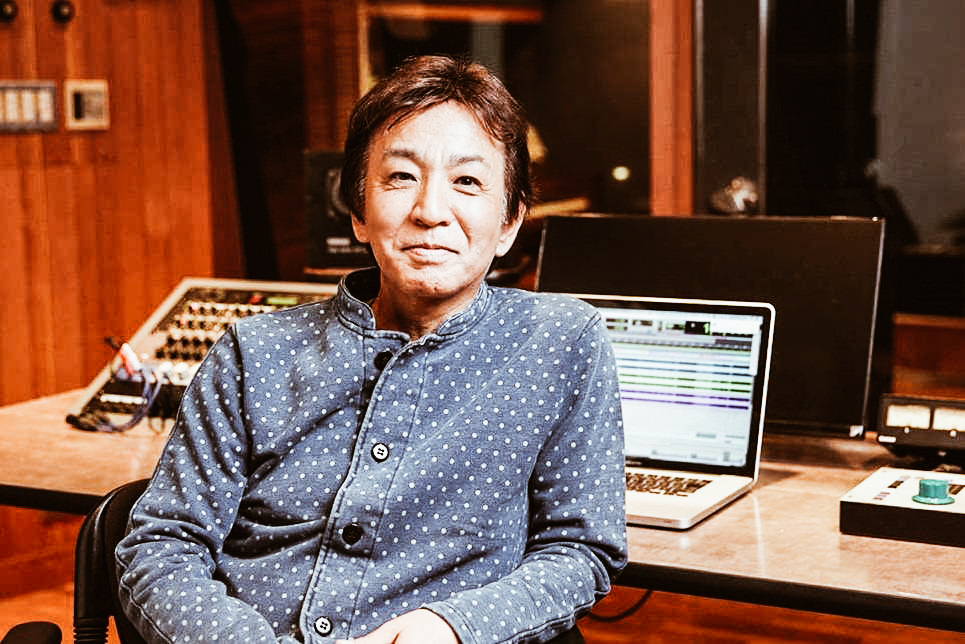
Singer-songwriter Tetsuji Hayashi says new technologies are rewriting the rules of how a song becomes a hit, "it could be from another country or another generation". It's been a few months now, but the 'Mayonaka no Door' case shows how the interaction between Japanese artists and international listeners has changed over the last few decades. International social media also allows a new generation to fall in love with an artist who might previously have been discarded from playlists simply because of her or his nationality. With the rise of K-pop and the unstoppable BTS, social media sites such as TikTok are also increasingly trending Japanese songs.
The power of TikTok
.

Based on recent statistics, TikTok users spend more than 850 minutes per month on the app, more than 14 hours per month. If we look at the data from October 2019 to March 2020, we can see a significant increase in the amount of time the average user spends on the app, also due to the lockdown.
This social media has spread like wildfire globally, particularly in Asian nations, becoming an entertainment outlet thanks in part to its search based on hashtags. In fact, as of June 2020, the most popular categories on TikTok all have over a billion views. If we go on to count lip-synching and dance videos, we arrive at a total of over 150 billion views.
2020 was marked by lockdowns, and it was during this time that people jumped on new media in search of entertainment and an outlet for their creativity. In fact, TikTok took second place on the list of most downloaded iPhone apps, surpassed only by Zoom for obvious reasons. TikTok even surpassed the downloads of Facebook, Messenger, Gmail, Netflix, YouTube and Instagram, across all app stores, making it the most popular app globally in 2020.
Moreover, in a world like the digital marketing one, we know how important the engagement rate of a social media is. Recent data show that engagement rate varies at different follower levels for Instagram, YouTube and other social media. However, at all follower levels, TikTok has a considerably higher rate than other platforms. In fact, Upfluence analysed that micro-influencers have an engagement rate of 17.96% on TikTok, compared to 3.86% on Instagram and 1.63% on YouTube. While mega-influencers have an engagement rate of 4.96% on TikTok, 1.21% on Instagram and 0.37% on YouTube.
The figures speak for themselves and in 2021 we can only expect a steady rise of this social network and who knows, maybe we can rediscover some other Japanese hits! Do you already have any idea on what the next music trend for TikTokers might be in 2021?
Business Focus: Native Advertising, what it is and its importance, also in Japan
We continue with our Business Focus column and today we are talking about Native Advertising. Have you ever heard of it?
Native Advertising: what it is and its importance, also in Japan
Author: Erika
At a time like this when the whole economy is almost at a standstill, the smartest move is to invest in advertising and marketing. But we know, there is a sea of information and possibilities in this field. However, recently many companies are asking "What is Native Advertising?", let's find out together.
Before we go on to talk about native advertising, we need to take a brief look at the world of online advertising.
The difficulties of online advertising
By now, we are all bombarded with so much information that the advertising market is often saturated. So how do you find and reach your niche audience?
The attention span of online users has been steadily declining for some time now. The average user has an attention span of around 8 seconds. Just think that a goldfish has an attention span of around 9 seconds, which shows how difficult and important it is to hit the user in the first few seconds of viewing.
If we then move on to analyse visibility and the famous CTR, we see that the majority of advertising banners are no longer even displayed, or even clicked on accidentally. In addition, users are also fed up with the exorbitant number of advertisements, very often unwanted. It is precisely here that the various AdBlocks make reaching our target audience even more difficult.
Basically, nobody looks at the banner ads on the various sites anymore. This is where content marketing comes in.

Content Marketing
By now, more or less everyone has heard of content marketing because most online advertising today is done through this form. Many companies, especially those with an international audience, have realised that content and influencers are an excellent (if not the best) marketing tool.
Indeed, branded content is now all the rage on social media and has become a much more effective form of advertising than traditional promotional campaigns.
In a nutshell, this content has a 7 times higher user trust rate than traditional display advertising. They are permanent and can capture visibility and traffic even in the long term. In addition, if we add in a properly done SEO operation, this content has a higher medium to long term ROI.
If we then consider that over 51% of the time spent by users on digital media is spent on a mobile platform, we understand how fundamental it is to have a format that works on these devices.
Mobile and advertising
In a very short time, we have gone from a horizontal 16:9 view to a vertical 16:9 view. Thanks to Stories, Reel and especially smartphones, this format is now one of the most popular formats for all digital advertising campaigns. In fact, our phone screens are already smaller than a computer screen, so why waste precious visual space with display ads, overlays and totally intrusive pop-ups?
It is precisely on these devices that advertising should be designed to optimise screen space and, consequently, the flow of navigation (continuous scrolling, of course). So how do we do it? With Native Advertising of course!

What is Native Advertising
And here we come to the highlight of our article. In essence, Native Advertising is advertising that adapts to the context in which it is placed. For example, they inherit the function of the platform they live on (e.g. Facebook likes). Furthermore, they do not interrupt the user's navigation and are relevant to the viewer. These are characteristics that lead to a greater engagement with this type of advertising.
Basically, nothing new you might say. For years we have already been developing native campaigns such as sponsored posts on various social media, sponsored articles, widgets and so on. However, there are several recognised forms of Native Advertising:
- In-Feed: paid ads placed in an editorial site
- Paid Search: paid ads placed on the results page of a search engine.
- Recommendation widgets: paid advertisements promoting content related to an article.
- Promoted listings: paid advertisements inserted in the product listing of an e-commerce.
- In-Ad: content inserted inside a standard advertising format.
- Custom: special tailor-made initiatives conducted by a brand in collaboration with a publisher, i.e. sponsored articles.
As this is a less overt form of advertising than others, it is important to emphasise when a piece of content has been sponsored or not. Transparency must always be guaranteed.
Creating content that the public loves
We have often had to create content for a Native Advertising strategy, from brands selling Japanese lifestyle products to children's products. However, the main aim is not to sell, but to build the audience for the client.
To do this, it is important to follow several rules because the "sponsored post" cannot be too different from the rest of the content that the chosen platform usually offers. The length, the tone of voice, the language, the font, everything must be in line with the other content. However, it is essential to create a title that is clickable and captures the visitor's attention.
It is very important to be able to capture the user not with numbers and questions, but with a narrative that fascinates him. By now, even the least astute of internet users can tell when someone is trying to sell them a product. Because of this, it is important to differentiate our "sponsored post" by telling personal experiences and creating empathy for example.
The audience has to be involved but above all entertained. Making a person laugh is one of the hardest things to do, but when you succeed, you have captured their attention forever. And so the customer is retained.
Be empathetic but objective, try to help the audience in some way and share your experience. The product does not necessarily have to be mentioned repeatedly, once is enough, also because with the opposite you could risk falling into what in jargon is called "branding" and thus achieve the opposite effect desired by Native Advertising.


Native Advertising in Japan
And here we come to Japan. Despite being a country extremely focused on traditional media and advertising on them, things are changing recently. Due in part to the recent pandemic, the advertising market has seen a significant surge in digital. In fact, Japanese advertisers spent nearly $15 billion on digital in 2021. With the rise of digital media in Japan, companies can no longer ignore the importance of integrating a digital strategy into their overall marketing.
However, fundamentally the Japanese people remain a very traditional people, very tied to history and past experiences. The Japanese people are extremely trust-based, so digital advertising still depends on having a good online reputation. Therefore, SEO and social media operations become key to getting better results in the Japanese market.
One of the keys to a successful campaign in Japan is the use of correct localisation. We can't say it enough, but the Japanese are extremely meticulous when it comes to choosing the right product before making a purchase. Using their language and visuals becomes really important. Writing content that is correct and in line with your target audience is one of the foundations for building a good campaign. Attention to detail and high product quality is the key to winning over Japanese customers.
In conclusion
Native advertisements should resemble any other article on the chosen platform, both in style and function. Be resourceful, truthful and above all remember to entertain your audience.
Business Focus: Digital transformation, the key to increase the economy
This pandemic has hit the world economy hard and one of the keys to recovery is digital transformation. Let's continue our business focus and today we are talking about just how much an online presence can influence the economic development of Italy and Japan.
The Digital transformation: could it be the key to increasing Japanese consumer spending?
Author: Erika
In recent months, many companies have launched themselves into the digital world and many shops have transported their windows into the area of e-commerce. This clever move has allowed them to continue working even during the months of lockdown, and not to stop their production.
However, in Japan, as well as in Italy, the economic recovery has slowed down considerably. For what reason? The reason for this is that in both countries the spread of e-commerce and online presence is lagging far behind other countries.

During the months of the lockdown, people drastically reduced their visits to shopping areas. However, in OECD (Organisation for Economic Co-operation and Development) countries, retail sales have increased and on average above the pre-pandemic level. This means that the majority of sales were made through online sites and e-commerce.
The situation is different not only in Italy but also in Japan. Here, sales are still below the levels recorded before the pandemic. In these two countries that are so different and yet so similar, people have locked themselves in their homes without spending money. In fact, at the end of June, Japanese households' cash and bank deposits reached a record figure (1,030,000 billion yen).
However, this did not help the economy, which was already severely affected by the repercussions of COVID-19. According to some, this brake is due to the insufficient development of the e-commerce sector and the scarce online presence of companies in the two countries, both Italy and Japan.

In fact, according to a 2019 statist survey, only 16% of Japanese people said they had purchased online in the previous year. This figure ranks fourth among the 45 developing economies. It is therefore conceivable that once the digital transformation arrives in Japan, the potential for increased household spending could be enormous. In fact now, after months of pandemics and constraints, consumers are tired of staying at home and are willing to spend.
How to get the digital transformation to Japan?
Everything we have said so far, are hypothetical speeches with enormous potential. However, in order to turn this potential into a real economic recovery, the government and firstly the companies themselves would have to invest in digital. We are referring to the creation of e-commerce, websites, social media channels and influencer marketing so that the business linked to these companies can restart.
In support of this theory, leading Japanese companies plan to invest 16% more in digital for the fiscal year 2020. In fact, a total of 765 companies aim to spend 471.8 billion yen ($4.45 billion) on technology, shows a survey Nikkei on listed companies and those with 100 million yen or more capital. This marks a second consecutive year of double-digit growth.
With the pandemic disrupting the flow of people and goods, companies are turning to technology to adapt sales and distribution channels to the new norm. Seven & Holdings, the company behind the 7-Eleven convenience stores, expects technology investment to increase 19.9% to 121.2 billion yen - the largest sum on the list.
Investments in technology have already borne fruit and a return on these investments that can only accelerate. In fact, the companies that have embraced the digital transformation are the ones that are doing the best in this pandemic.
"Business leaders are forced to adapt to the coronavirus, and now they realise the importance of digital transformation," said Saisuke Sakai of the Mizuho Research Institute. "IT investments could grow even more in the future." / source: Nikkei
This leads us to understand that now more than ever it is time to invest in digital and create an online presence for your company in both Japan and Italy. Only in this way, companies will be able to keep their work going and have constant sales even in these uncertain times.
Japan Italy Bridge keeps you informed about the suggestions for companies in our business focus feature, or you can find us on facebook and tell us your opinion. Alternatively, you can join our newsletter or request a quote on our services to communicate your company in Japan and Italy and be part of the digital revolution.
Business Focus: E-commerce after the pandemic
The effects of the Coronavirus are still being felt, however, we are not talking about positive cases but about online presence and e-commerce. We continue our Business Focus features and today we are talking about how e-commerce platforms have influenced this 2020 and how they will influence our future.
The importance of e-commerce during and after the pandemic
Author: Erika
During this 2020 we understood how extremely important it is to have an online presence, for any company, even more so for shops. Not only social media but above all e-commerce has also depopulated due to the pandemic. With the forced closure of shops, in fact, many businesses have found themselves having to run for cover and create an online presence very quickly.
The impact that the lockdown has had on the habits of us Italians, but also of the entire world population, is extremely evident. In fact, in recent months, e-commerce has become one of the main channels to buy essential products without having to leave home.
We can in fact see from the data how between February and March 2020 online sales in Italy grew significantly compared to the same period in 2019. The favourite moments for Italians to shop are during the weekend. Precisely because of the coronavirus epidemic (COVID-19), on 8 March online sales increased by 90% compared to the same period of the previous year.

Some data
According to the GfK Consumer Panel, almost 4 out of 10 Italian households made their first online purchases in March. While, from the beginning of the year to date, 2 million new online consumers have been registered in Italy (out of a total of 29 million).
Between February and March 2020, online sales in Italy grew significantly compared to the same period in 2019. In fact, compared to the first six months of 2019, the total amount was 700,000 new consumers.
According to a recent survey conducted by Ipsos on the impact of the Coronavirus pandemic on individuals' attitudes and behaviour, in Italy, 31% of respondents said that the frequency of buying goods online has increased. On the other hand, almost half of the respondents stated that their frequency of online purchases has not changed at all.
Thanks to the COVID-19 pandemic, online retail platforms experienced an unprecedented increase in global traffic between January 2020 and June 2020, even surpassing the Christmas holiday traffic peaks. Overall, retail websites generated nearly 22 billion visits in June 2020, compared to 16.07 billion global visits in January 2020.

In short, having an online shop is now an inevitable option for any business. Moreover, according to analysts, the online commerce sector is the one that will grow the most in the world economy, with an increase calculated up to +55%.
This is precisely the time to equip and invest in digital technologies and focus on digital transformation. Adapting your services to online sales is the smartest move to make at this moment in history.
The cornerstones of a perfect e-commerce
By now we already know that the online consumer is much more demanding and sometimes more suspicious than the classic customer who visits us in the shop. However, user satisfaction is one of the fundamental cornerstones of a good e-commerce. Reliability and quality of service, user-friendly interface and customer service are fundamental points.
In addition, there can be no lack of excellent communication and marketing management specific to an online shop. Japan Italy Bridge not only builds high-level e-commerce but also communicates your brand online on various platforms. In fact, SEO optimization for an e-commerce and brand awareness help to increase sales and the customer's perception of the brand itself.
In particular, communication and marketing are the highest obstacle to overcome but also the focal point for the scope of an e-commerce. Investing in professional translations and a team that follows the social and digital marketing part helps to position your brand on search engines.
What Japan Italy Bridge recommends is to create a multi-channel system that will lead you to a winning e-commerce and increase your sales and revenues. together with that, you may also discover markets that were previously cut out of your sales strategy.
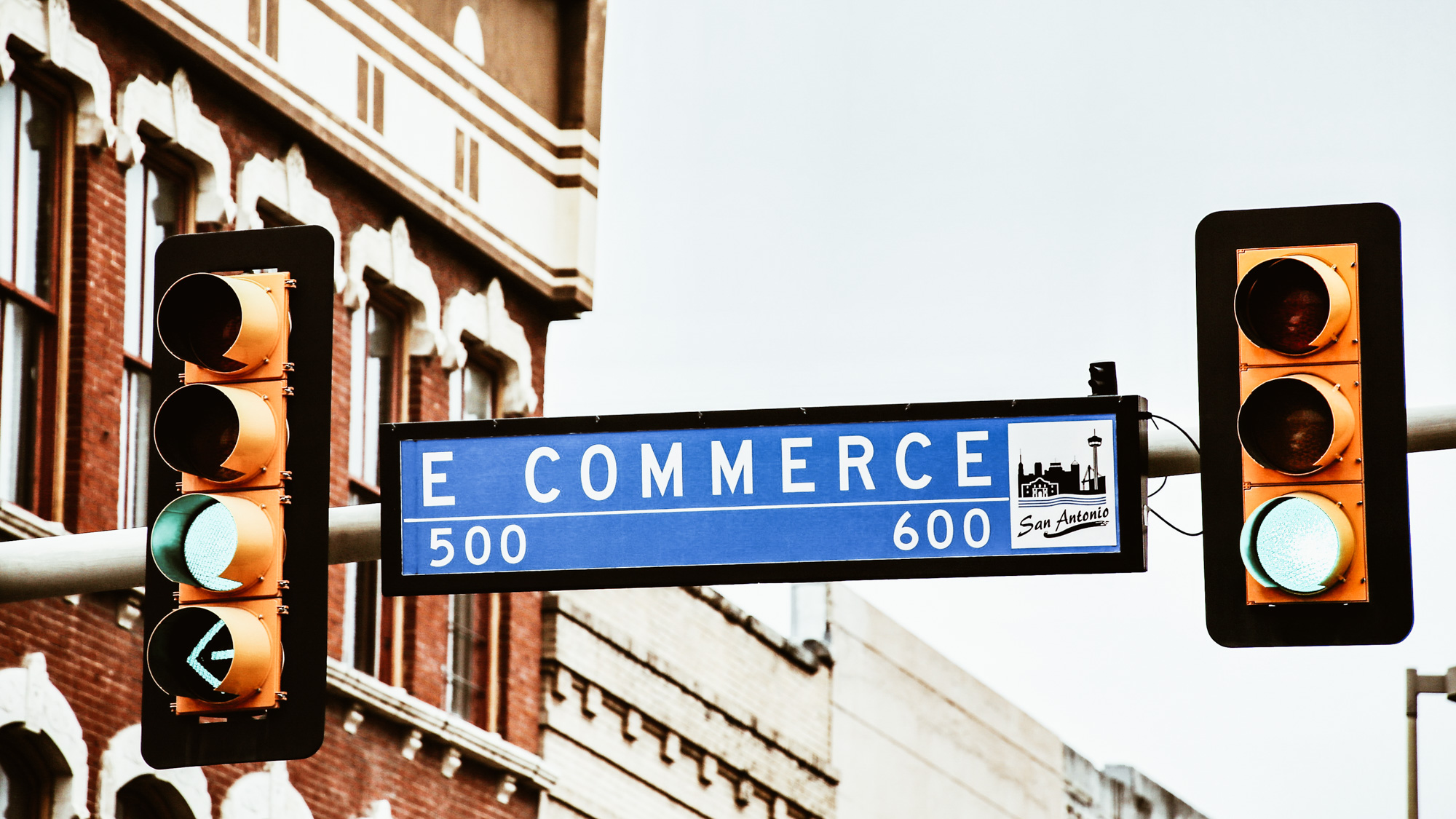
This COVID experience has taught us that we must always be ready for change and differentiate our presence on offline and online platforms. The way we sale our products and the means with which we do this have drastically changed. Virtual retail market has received disruptive effects that no one would have imagined until recently. This has had a major impact on the economy and organisation of many companies. Nowadays it is in fact normal not only to receive take-away food at home, but also other types of materials.
After the experience of the pandemic, it has become crucial to have an online presence. If your company is interested in building an e-commerce or interfacing with the digital audience, you can contact us and find out about our offers.
Business Focus: Social Media during and post the pandemic
Social media has long been an integral part of our lives, but it was during this global pandemic that we discovered how important this medium is.
The importance of social media in pandemic times
Author: Erika
The COVID-19 pandemic has completely turned our lives upside down, not only in terms of health care but especially in our daily routine. If there is anything we have learned from this situation, it is that we must be prepared for whatever the future holds. No goal is realistic, but in our plans, we must try to get as close as possible to what will be the reality.
Many are wondering what the post-COVID-19 world will be like and finding an answer is not easy. But one thing is certain, we must be ready to change and adjust our marketing strategies at any time and digital seems to be the right way to do it.
In this article, we are going to see how COVID-19 has affected the use of social media by companies.
With social distancing, digital and social media have had an impact of considerable intensity. In fact, we have seen a boom not only in messaging and video calling apps, but also all those platforms that have allowed us to make digital events.
Both in our private and working lives, our daily lives have been touched and marked by a change in many habits. However, not all the consequences have been negative.
The famous digital transformation, which was at a standstill in Italy, has accelerated considerably as a result of this global situation. Driven by the impossibility of continuing with the old methods, even the most stubborn brands have surrendered to the digital evolution of communication.
Social marketing strategies are changing

Marketing strategies have changed to adapt to new media and tools, but first and foremost the way companies communicate and relate to clients has changed.
In this pandemic period, the public has changed their needs and companies have had to learn how to relate in an advantageous way. This is why a lot of social media marketing has changed during the pandemic.
Spending much more time at home and bombarded by all this negative news, the public felt the need to feel connected to the world in some way. This is one of the fundamental aspects that has allowed companies to take advantage of the opportunities and offers related to digital transformation.
For those of us who are involved in marketing, you will have noticed that the publication times of the posts have been completely overturned. The COVID-19 has shuffled its cards around a lot, and if you used to prefer to post on socials on specific days during the lunch break, now this period has been extended to all weekdays. Instead, what we call "commuter time" has taken a back seat, so from 5 pm onwards socials are now less popular.
Whereas before the weekend was one of the worst times to publish, now post lockdown on the morning of the weekend has become one of the most sought-after moments.
Most viewed social media during the pandemic
With forced lockdown, TV programmes suspended, news monopolised by Coronavirus news, the public desperately needs entertainment. This has caused audiences to pour into social media, particularly Instagram, YouTube and TikTok in search of distraction. For this very reason, it has become even more crucial to publish at the right time.
The volume of messages sent and received has also changed. Although for some sectors there has been a decrease in the publication of posts, for other companies the volume has remained constant or even increased.
In fact, some companies increased the number of messages addressed to the public during the pandemic. For example, the entertainment sector has increased its social media activities to provide a distraction to citizens already destroyed by social distancing.
Other companies linked to the sport and tourism sectors have been particularly affected by the restriction or suspension of all activities. And it is precisely in these sectors where there has been a decline in communication. However, this was the wrong step to take. It may seem the most logical choice to cut communication-related funds in a time of crisis like this, but in reality, it is one of the most counterproductive gestures a company can make. But we will talk about this in one of our next articles.
Social media as a tool to connect people during the pandemic


Since the beginning of 2020, we have seen how our lifestyle has changed completely by creating new rules for everyone.
In fact, many companies have found themselves having to recalibrate their strategy in light of what has happened. We have asked ourselves many times whether this content is suitable for the current situation, and many times we have found ourselves removing it. In a period like this where people are particularly sensitive to all kinds of messages, it is very important to control what is shared but even more important is to adapt to each situation.
Listening to your clients' requests and feelings and identifying their needs is fundamental nowadays in order to understand how to orient your strategy. The pandemic has created a general climate of terror and for this reason, the public is now looking for positive conversations. People have grown tired of negativity and all this concern about COVID19 and are looking for social distraction.
In March, the number of messages on the topic of helping others increased by 1.174%, culminating in 19.5 million messages during the month. In this period of insecurity, people are trying more than ever to connect and support each other. Social media has become the epicentre of this movement.
In SproutSocial's #BrandsGetReal 2019 survey #BrandsGetReal, it was found that 91% of respondents believe that social networks have the power to connect people, of which 78% would like brands to use social networks to bring them together. This sentiment became even stronger after the pandemic.
Being able to understand what your audience wants and show them that your company has understood this need is the best solution for good communication even in this strange 2020.
Business Focus: The weird world of Japanese web design
Have you ever wondered why Japanese web design is so different from that in the West?
The weird world of Japanese web design
Author: Erika
Japan Italy Bridge offers services for companies and part of our job is to create websites. "What's new" you might say, yes because there are so many agencies like us, but what makes us different from the others? Well, we have the ability to adapt the Japanese style and visual to Western-style and vice versa.
It is very, very important for every company to have a website that represents their brand. However, it often happens that the style and design we use in Italy is not really suitable for the Japanese language and people.

In fact, if we analyze even just visually the Japanese sites, the differences immediately jump out at us.
As we know, in most of the Western world, websites have a simple layout. In fact, compared to the early 2000s, we have replaced the myriad of links with relevant and concise content that quickly leads us to our goal.
However, there is also a different culture in Japan in terms of visual taste. In fact, some websites have changed very little since the early 2000s. In this respect, we can really see how different sites are overloaded with links and information. This is totally inconceivable for a Western eye, while it becomes the norm for a Japanese one.
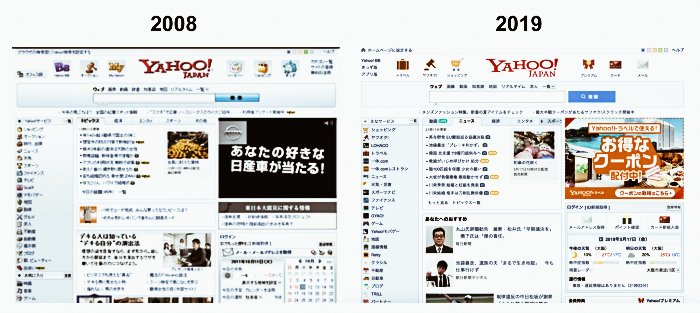
Yahoo was one of the most popular search engines in Japan and still is for many homepages. However, as you can see from the photos, its design and layout have changed very little in the last 10 years.
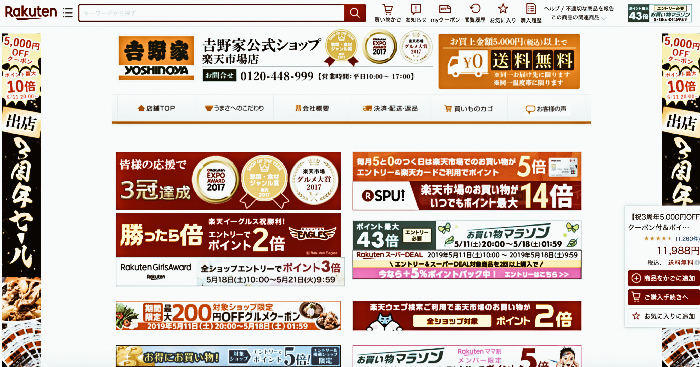
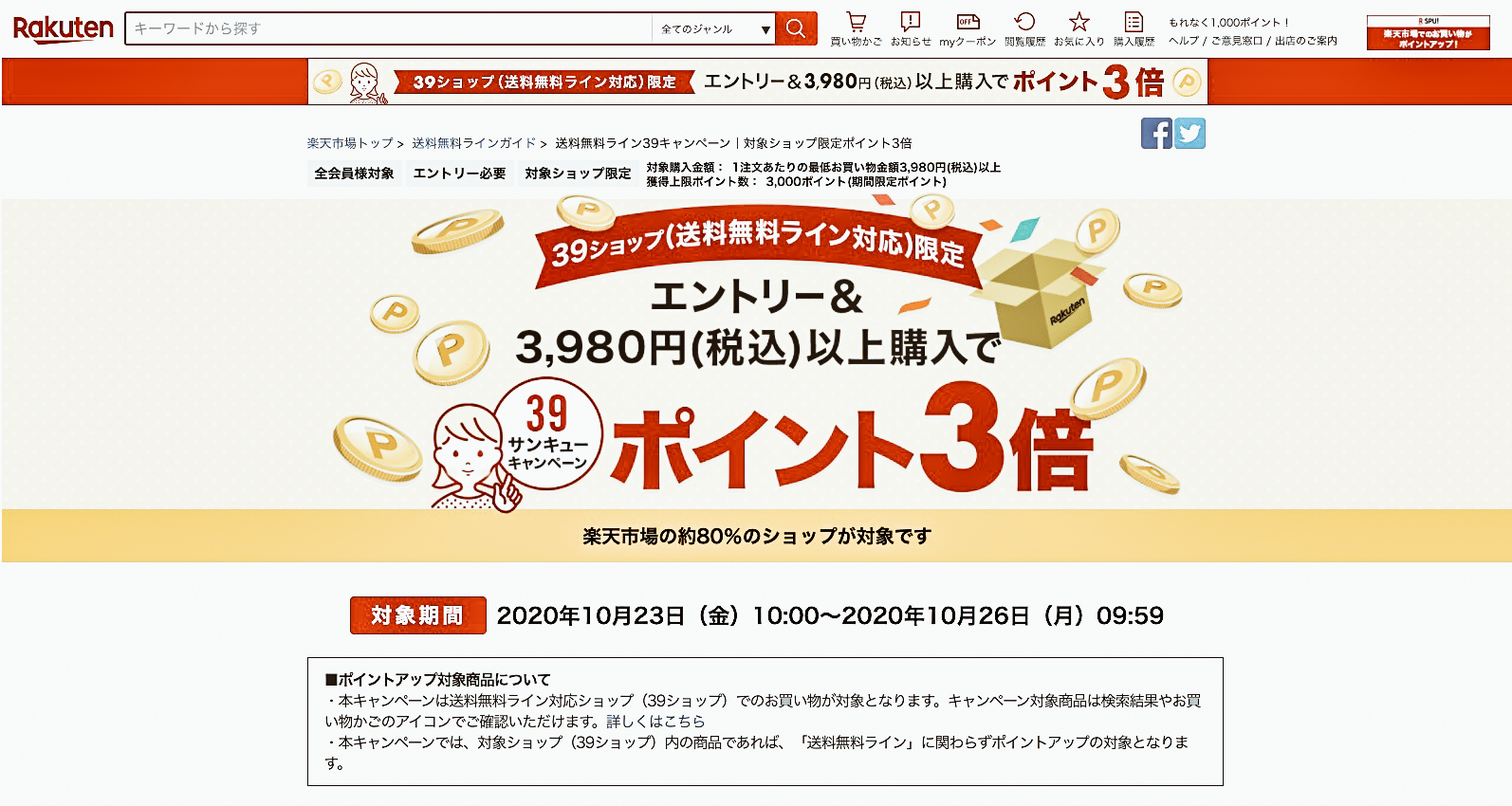
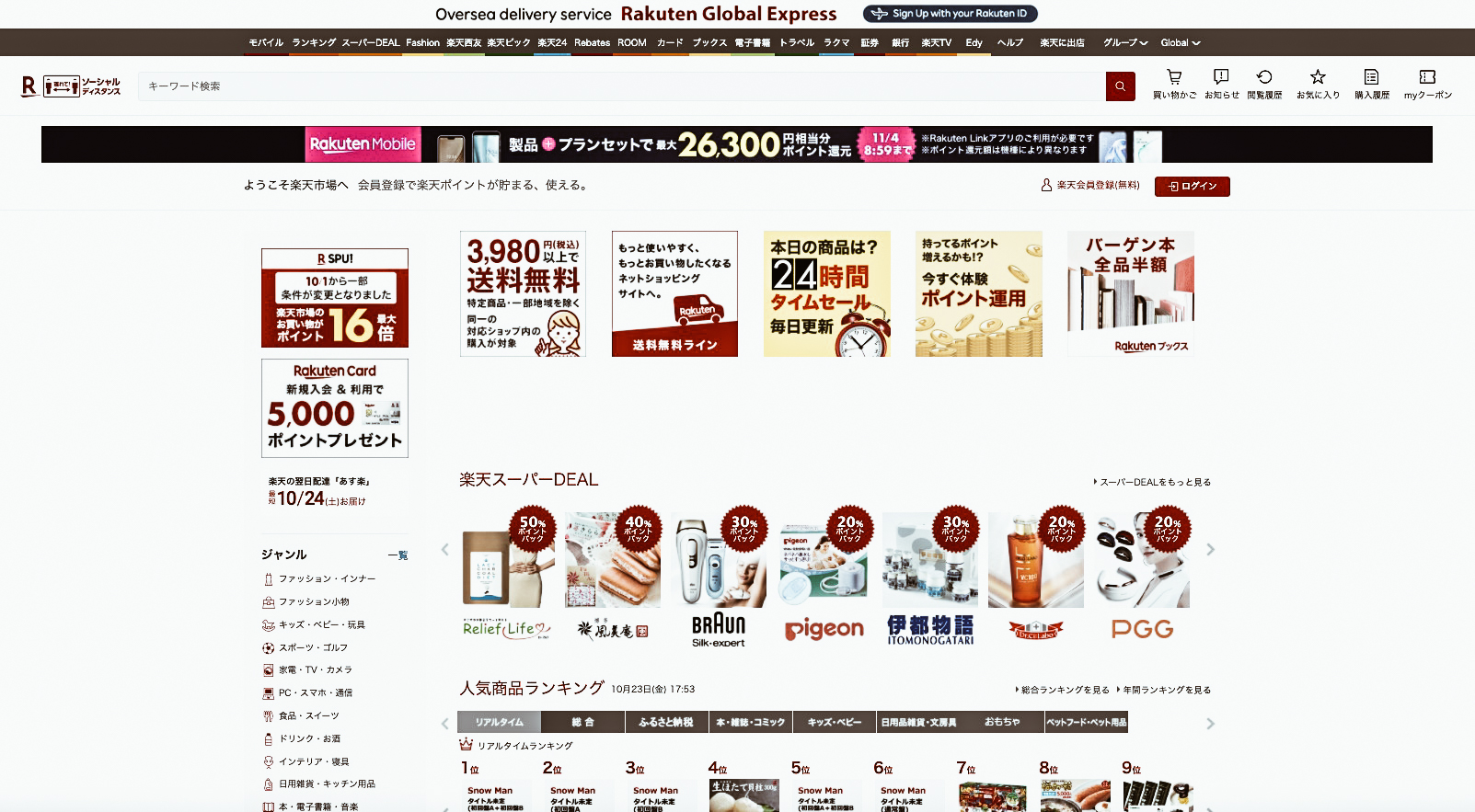
Another example is the homepage of Rakuten, the nation's largest online shopping centre.
Rakuten is the Amazon of Asia and every shopkeeper can customize their own page. This results in a large display of various images, banners and pop-ups on different pages that sometimes take a long time to scroll through.
Why is Japanese Web Design like this?
But here's the real question, why does web design in Japan have to follow these certain canons of style? The answer is simple. The majority of the Japanese people are older users who prefer to maintain the tradition. This also happens in the visual style of how websites are built and experienced.
This makes it complicated for companies to change to a style that we might call more international.
Moreover, most Japanese users use the internet via desktop and not mobile support. So even the biggest websites tend to keep the current design, also not to confuse the end-user.
Another reason why Japanese people prefer this style that we would call "old" is also because of their information culture. In fact, if you have ever been to Japan or seen some pictures of the country, you will have noticed that signs are omnipresent. The Japanese are bombarded with bright neon lights and signs that tell of shops, special offers, and occasions not to be missed. This also transpires on websites where the Japanese people prefer to have all the information immediately.
The LINE Case
When the LINE messaging app (the Japanese equivalent of Whatsapp) decided to change and simplify the layout of their homepage, the Japanese people did not take it very well. In fact, at that time, users went wild with one-star reviews and numerous requests to the company to change to the old design.
Change on the horizon
However, despite the preference for a more traditional approach, some young people in their 20s and 30s have stated that they prefer a more minimalist design.
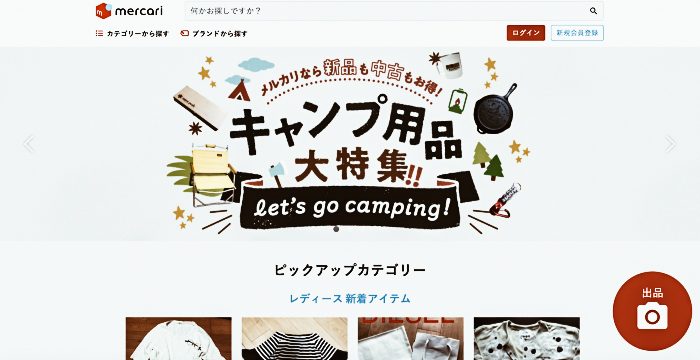
The Mercari case is in fact an example of this. We are in fact talking about a site that offers online auction services with a simple and user-friendly interface. In a short time, Mercari has taken over Yahoo Auctions, the most popular app in Japan for these services.
The history of this brand has shed light on the importance of a good UX layout, encouraging the Japanese to hire new designers on the verge of change.
Japanese companies will have to start adapting to a more modern design not only to be more attractive to a younger audience but also to become more competitive internationally.
If you liked this and our other articles, join our newsletter to receive exclusive updates and many new articles.
Business Focus: Influencer Marketing in Japan, 5 things to know
We have all heard of Influencer Marketing but what are the differences in Japan?
Japan Italy Bridge offers services to companies in the field of Digital Marketing and events. Many Italian companies that have requested our promotion services towards the Japanese market, asked us what are the differences between the two countries regarding Influencer Marketing.
Influencer Marketing in Japan: 5 things to know
Author: Erika
For those who do not know what Influencer Marketing is, we are talking about a branch of marketing that benefits from the use of bloggers and influencers with a specific target audience.
Nowadays, this strategy is one of the most effective methods in most markets, this also applies to the Japanese one. In fact, Influencer Marketing in Japan plays a big role but the rules are different than in Western countries.
Today we share with you 5 differences to help you understand better.
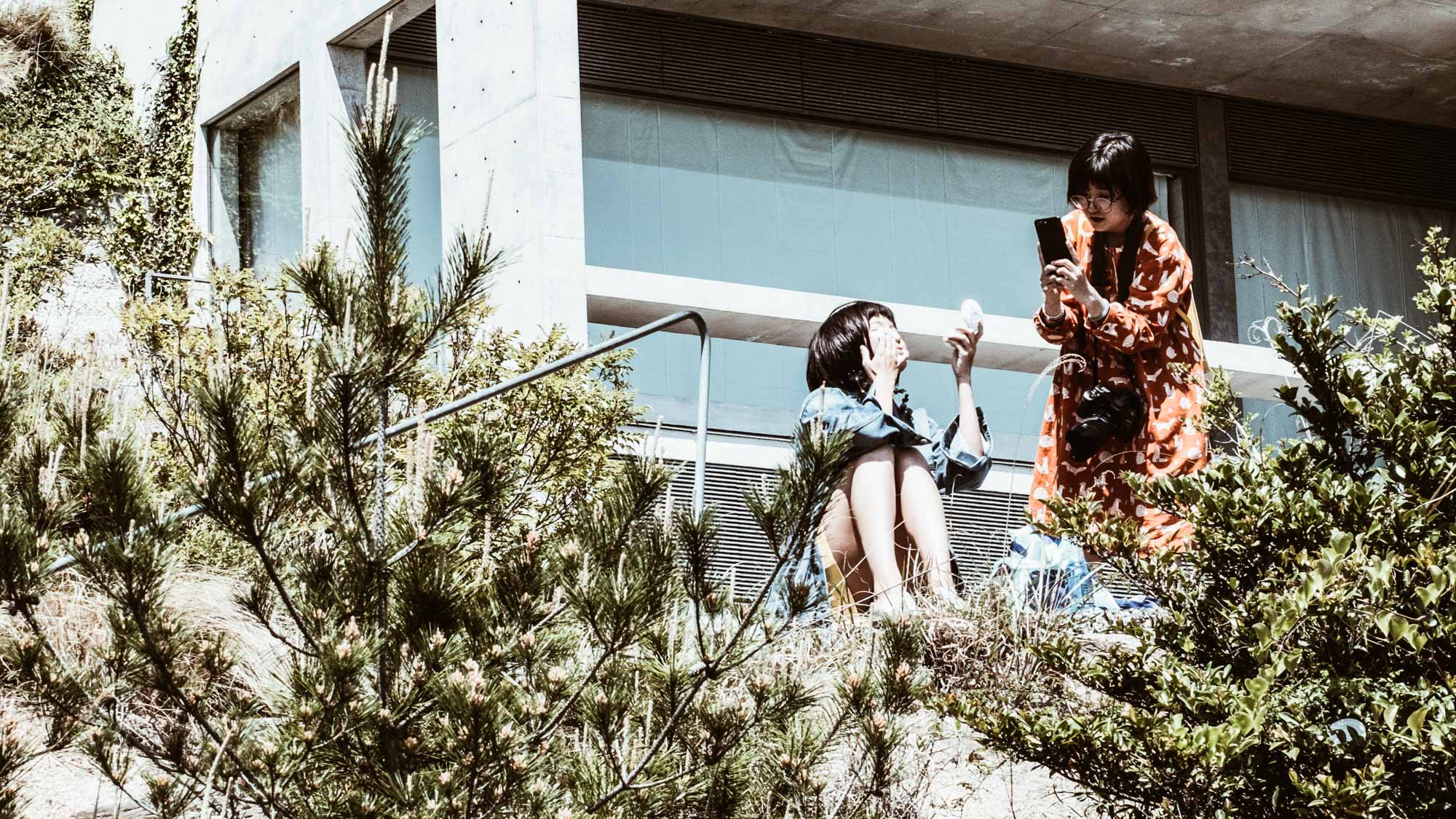
The language barrier
One of the aspects of Japanese social media and therefore also of Influencer Marketing is that everything must be done in their language. Unfortunately, Japan is ranked 49th among the 88 countries and regions in the ranking of English language study and knowledge. A lack of expertise when you think about how much Japanese use social media to get informed and communicate.
Because of this, classic global influencers such as Chiara Ferragni, Cameron Dallas and others are not as influential as they are in other countries accustomed to the English language. In fact, sometimes they are almost unknown even compared to local influencers with fewer followers.
This leads to a big dilemma for companies: to use local influencers or completely ignore the Japanese market? True, the Japanese market is now not as profitable as the Chinese one. However, Japan is ranked 3rd in the GDP world ranking and this is too important to completely ignore this country and its audience.
As said before, it is true, Japanese Influencers have fewer followers than global ones. However, precisely because they speak in a language closely related to the culture of the Rising Sun, this leads them to not have many followers in the rest of the world.
What we can understand from this data, however, is that in this case engagement becomes extremely important. In fact, Japanese influencers are extremely connected to their audience and the interactions far exceed those of the westerners one.
Japanese hashtags require a cultural background
When a company opens to the Japanese market, it must understand the uniqueness of this country and its culture. It is therefore important to work with correct hashtags and use them properly. This will lead us to find the target community that we can approach and get a return on our investment.
Influencers and micro-influencers can be found using hashtags. However, finding the correct Japanese hashtag is not so easy for those who do not speak the language and do not know the culture. Moreover, very often the most common hashtags are neologisms.
For example #インク沼 is a direct translation of "Bottomless Swamp of Ink". Apparently, this doesn't make any sense, except that "Bottomless swamp of something" is an internet slang used a lot by Japanese people to describe when someone is really passionate about something. However, if we take away the cultural background, this hashtag completely loses its meaning.
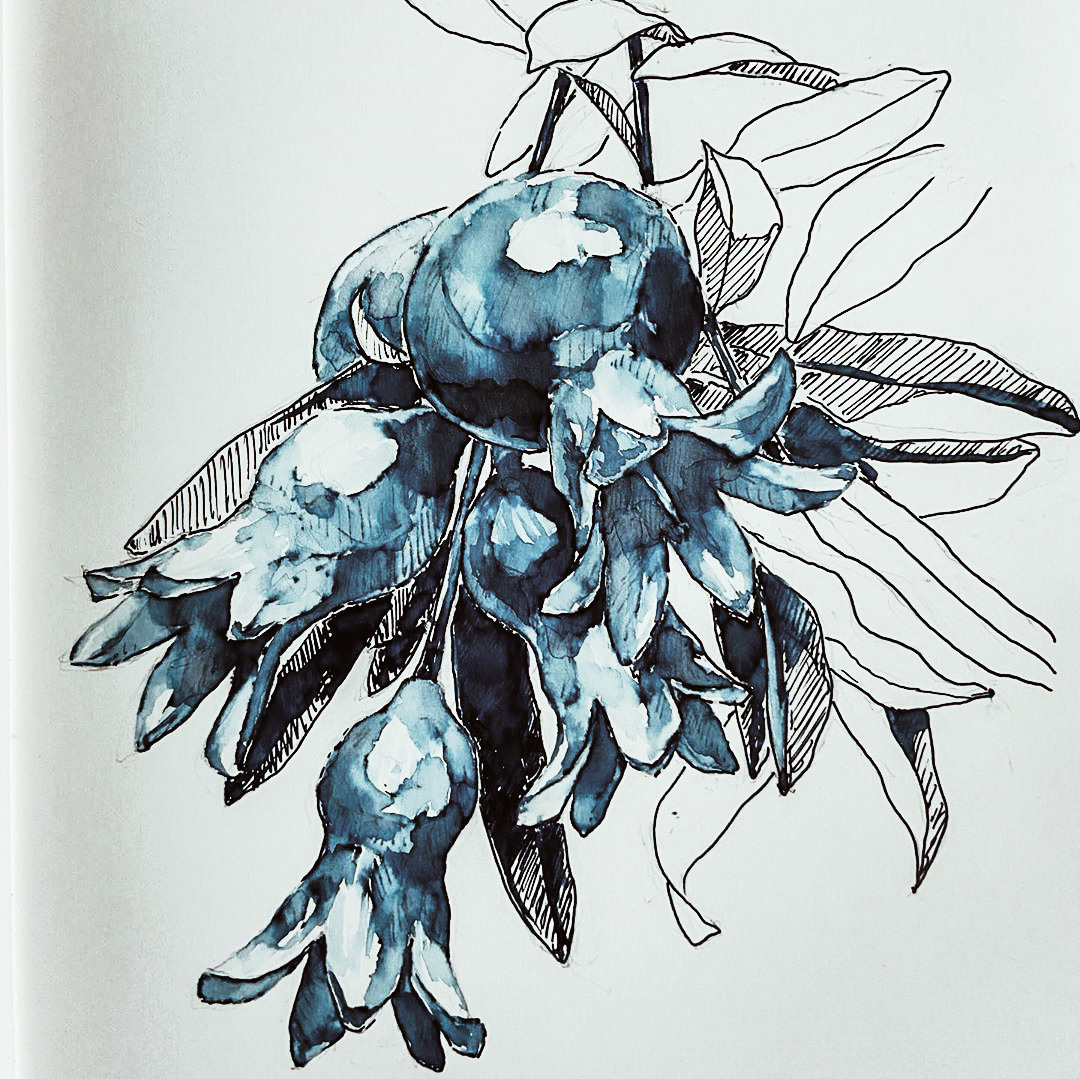


photo credits: @v_sarasara, @tommy_notes_16 , @mizuki___iz
In addition, Japanese hashtags can often be very complicated for a Western eye to understand. This happens because of the three ways of writing the language, namely the mix of Kanji, Hiragana and Katakana.
So when we use Japanese hashtags, we have to be careful how they are written because the combination of the three ways can bring different meaning. In the language of internet, a hashtag written in a different way also brings different results on an audience level. In fact, this can affect the number of people we might reach.
Influencers in Japan are distributed on different platforms
Even in the West, it is rare that an influencer has the same strength on all the most popular social platforms. Many are popular only on Instagram, others only on Tik Tok or Twitter. This has even more effect in Japan with the presence of some specific platforms for Japanese culture. For example, we have NewsPicks that interfaces with a purely corporate audience. While note is a social dedicated entirely to the content creators such as stories, tutorials, news blogs and especially manga.
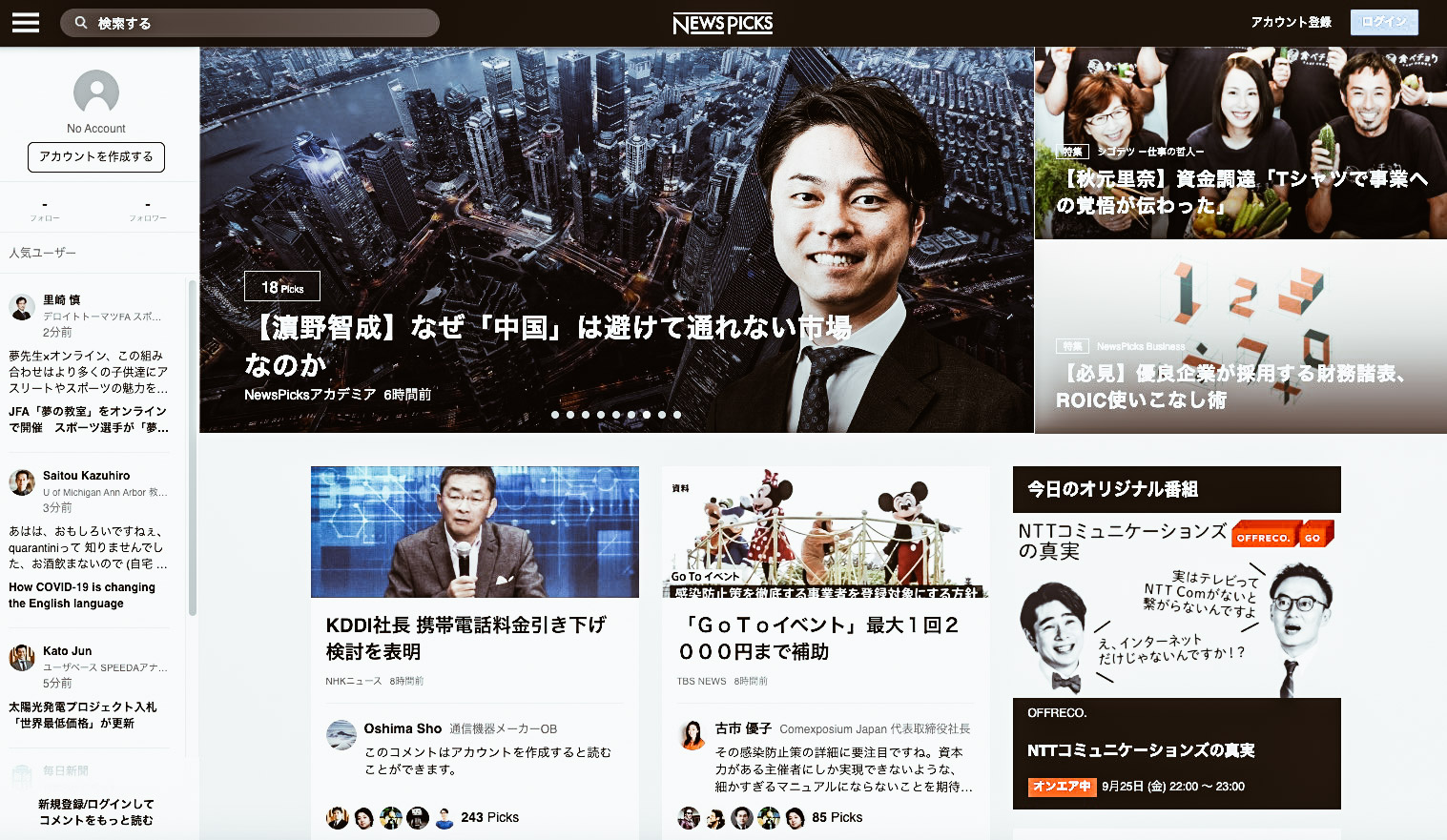
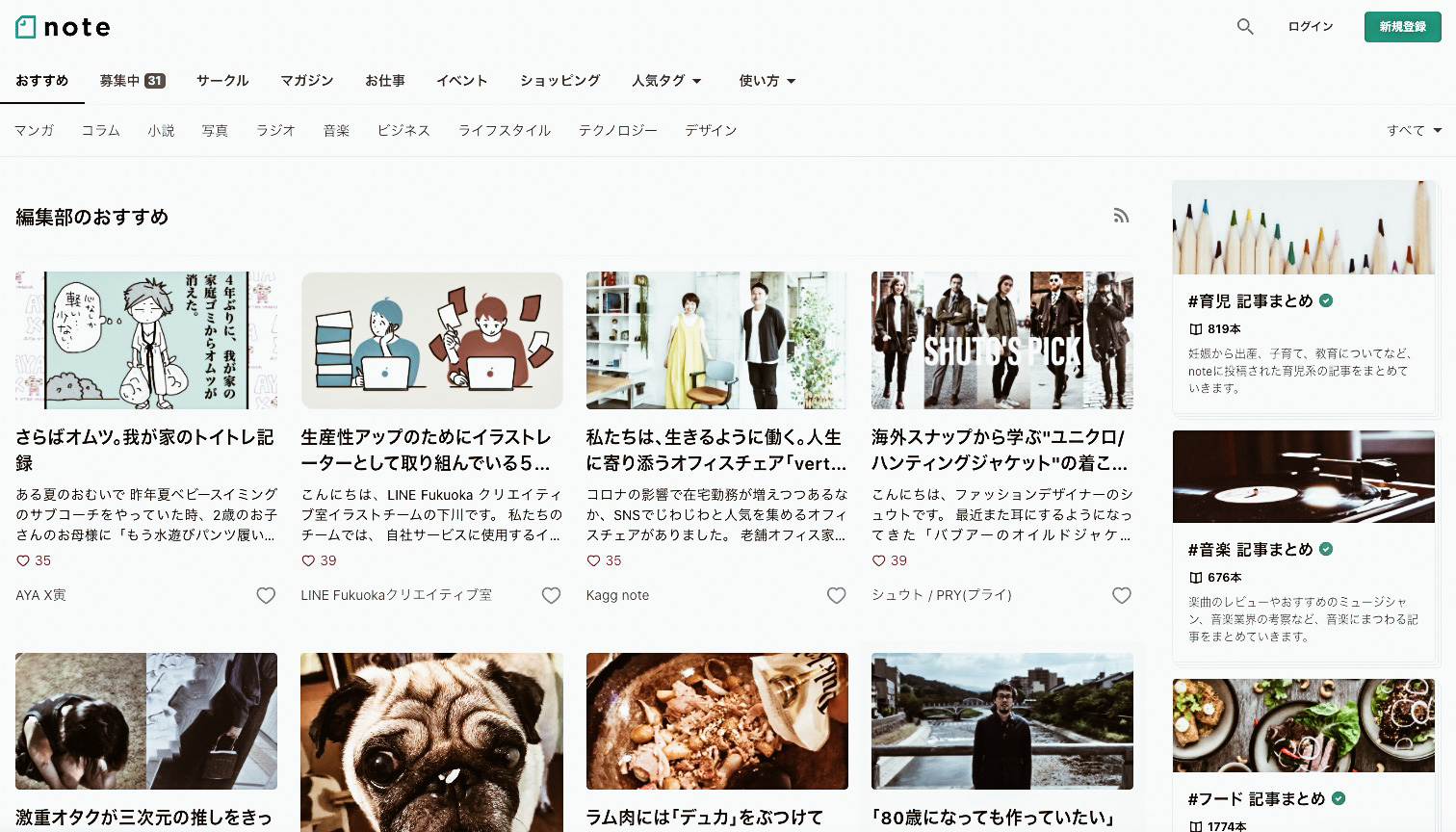
The top Influencers and agencies
As it also happens in the West, many Japanese influencers are followed by some agencies when they start to become popular. At the moment, unfortunately, there are few influencers who work freelance. So, if you want to work with an influencer who belongs to an agency, you have to go through the agency itself.
All this has its pros and cons.
Pros.
- Access to major influencers
- You save time in finding the right influencer since agencies like ours cover this part of the work for you.
- The agency negotiates contracts and fees
In this case, the work of the agency therefore becomes a benefit for the company that finds itself having a job tailored to its interests.
Cons.
- Higher costs
- Minor flexibility
- Direct contacts of influencers remain private
Unfortunately, when using an agency you have to comply with the rules of the agency and these vary from agency to agency.
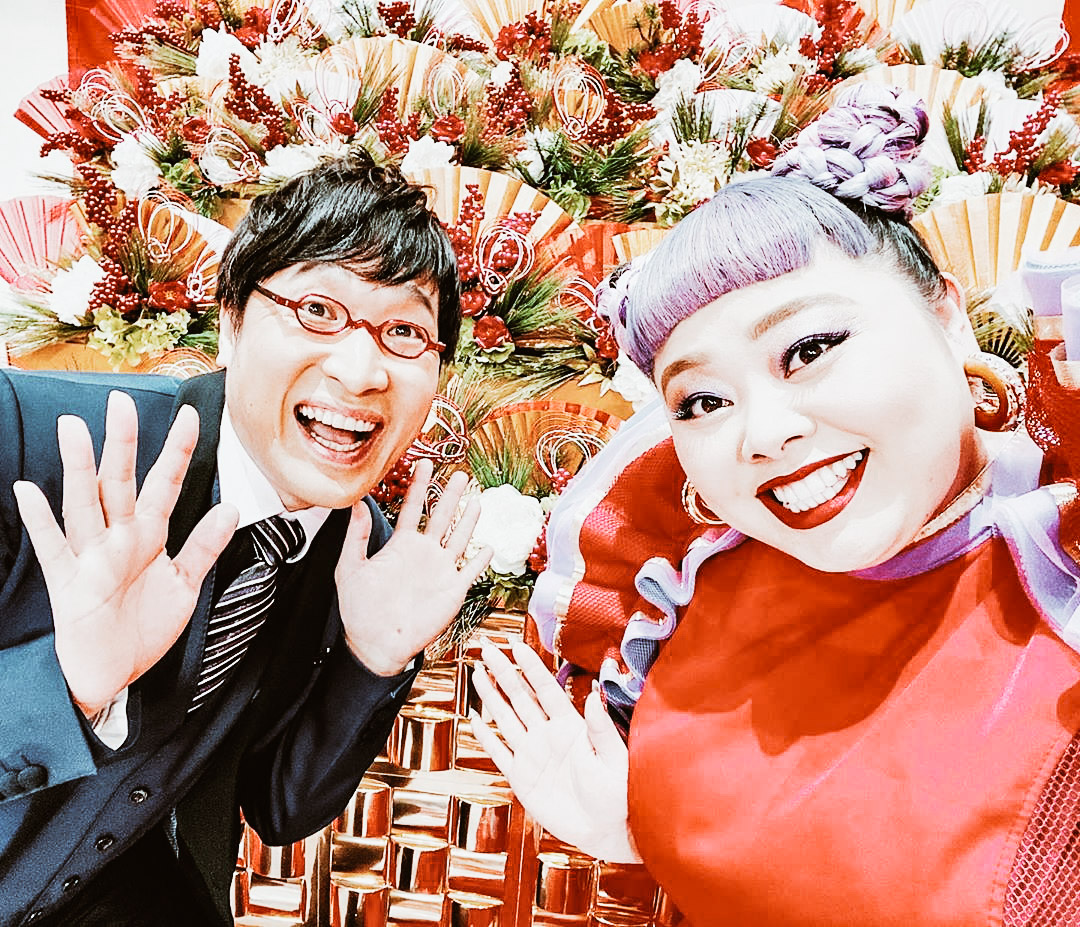

photo credits: @watanabenaomi703 , @rolaofficial
Undisclosed paid posts
Japanese people are very strict when it comes to honesty and transparency. This severity is also applied in Influencer Marketing in Japan. In fact, when paid posts from influencers not reported as such, they tend to be ignored by the public and give a bad impression.
However, there are no direct laws governing the transparency of an Influencer-sponsored post in Japan. In addition, not all influencers are aware of the right way to communicate a partnership.
For a company, it is therefore very important to educate the chosen influencers and not to work randomly to get impressions.
In the West, we now have clear guidelines on the use of sponsorship through Influencer Marketing and these should also be used for collaborations with Japanese Influencers.
If you liked this and our other articles, join our newsletter to receive exclusive updates and many new articles.













